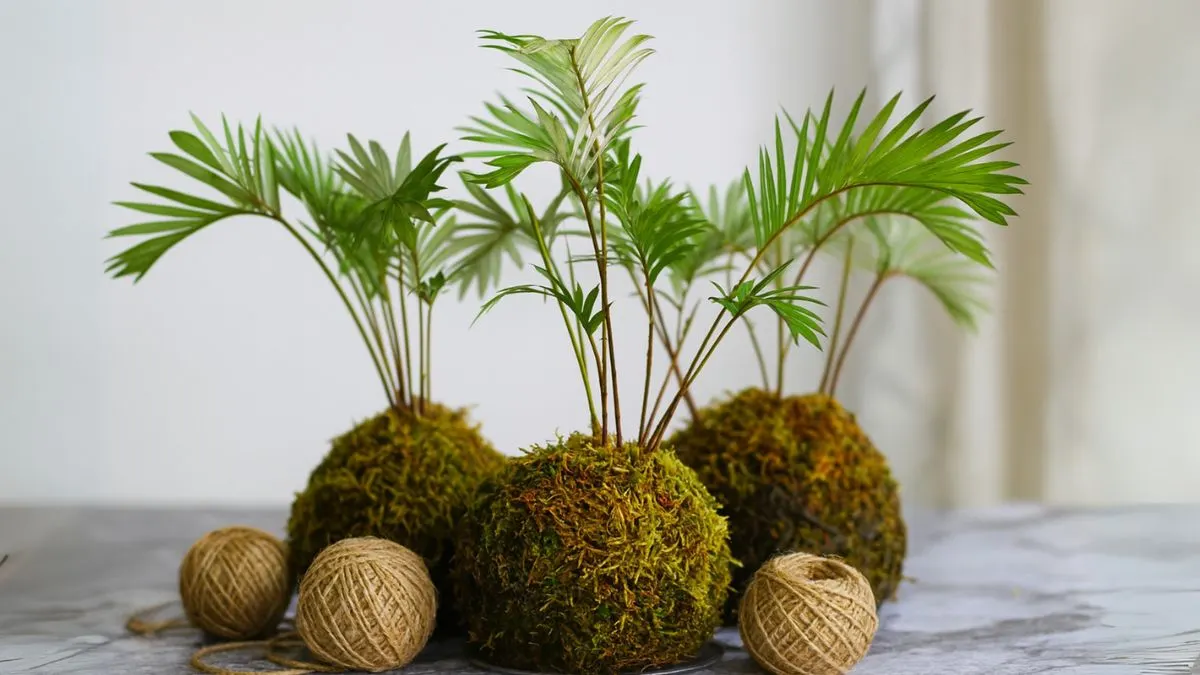If you’ve ever walked into a modern plant store and seen a plant suspended in mid-air wrapped in moss, chances are you’ve already met a kokedama plant. This artistic way of growing greenery has taken the world by storm, especially among urban gardeners in Canada, the U.S., and across Europe.
But what exactly is it, and why has it become so popular? Let’s dive deep into this fascinating Japanese gardening tradition.
What Exactly Is a Kokedama Plant?

A kokedama plant is a ball of soil, covered with moss, on which an ornamental plant grows. Unlike traditional potted plants, kokedamas eliminate the pot entirely, making the moss ball both a planter and a decorative piece.
Put simply, Kokedama is a style of Japanese bonsai, but with a more relaxed and creative expression. While bonsai often focuses on pruning and shaping, kokedama emphasizes natural beauty and minimalism.
A Glimpse Into History
These moss balls are a centuries old tradition in Japanese gardening, originating from the Edo period (1603–1868). Back then, kokedama was seen as a way to celebrate harmony with nature by using natural materials instead of ceramic pots.
Today, the practice has been revived as part of the “wabi-sabi” aesthetic—an appreciation for simplicity and imperfection.
Why Kokedama Plants Are Popular Worldwide
One of the reasons kokedama plants are trending in Canada, the U.S., and worldwide is their versatility. You can hang them from ceilings, display them on decorative trays, or even line them along bookshelves.
- They’re eco-friendly: Kokedamas are sustainable, eco-friendly ornamental plants since they reduce reliance on plastic pots.
- They’re space-saving: Perfect for small apartments and condos.
- They’re artistic: Each moss ball is unique, almost like living sculpture.
Also Read: Morel Mushrooms: The Gourmet Treasure You Can Grow in Your Backyard
How to Care for Kokedama Plants
Even though they look fancy, kokedamas are not difficult to care for if you understand their needs.
- Light: Most plants used in kokedama, like ferns, pothos, or peace lilies, prefer indirect sunlight. Place them near a window but avoid direct harsh rays.
- Water: Remember, Kokedama needs water, light and nourishment just like regular potted plants. The watering method is unique:
-
- Submerge the moss ball in a bowl of water for 10–15 minutes.
- Let it soak until air bubbles stop rising.
- Allow excess water to drain before placing it back.
- Feeding: Feed monthly with diluted liquid fertilizer during the growing season to keep them lush.
Choosing the Right Plants for Kokedama
While almost any small plant can be turned into a kokedama, certain varieties work best:
- Ferns – thrive in humidity.
- Succulents – perfect for minimal watering.
- Ornamental houseplants like philodendrons or peace lilies.
Each plant has its own personality, and the moss ball highlights its natural form beautifully.
DIY: How to Make a Kokedama
Creating your own kokedama at home is simpler than it looks.
- Form a soil ball (clay-rich soil mixed with peat moss works well).
- Insert the plant roots into the ball.
- Cover it with sheet moss.
- Wrap the moss ball tightly with string or twine.
And voila—your kokedama is ready to display!
Also Read: Why Horsetails Are the Perfect Plant for Wet Areas, Fences & Backyard Screens
Common Problems and Solutions
Issue |
Cause |
Fix |
Moss drying out |
Too much sun / lack of misting |
Move to indirect light, mist daily |
Soil crumbling |
Incorrect soil mix |
Use clay-rich or bonsai soil blend |
Plant wilting |
Over/under-watering |
Adjust soak frequency |
Personal Experience
When I created my first kokedama plant, I used a pothos, thinking it would be easy to maintain. The challenge was keeping the moss moist without overwatering. After experimenting, I found a rhythm—submerging it once a week and misting in between. Not only did it survive, but it became a conversation starter for every guest who visited.
Why You Should Try One
Owning a kokedama plant is more than just gardening—it’s an experience. You get to interact with your plant in a more mindful way, almost like tending to a piece of art. And since kokedamas are sustainable, eco-friendly ornamental plants, they align perfectly with today’s eco-conscious lifestyle.
Conclusion
The kokedama plant is more than a décor trend—it’s a living art form. With a Japanese form of garden art where a plant’s roots are encased in a ball of soil and moss, which is then secured with string or twine, it blends tradition with modern design.
As long as you remember the essentials—Kokedama needs water, light and nourishment—you’ll have a lush, thriving moss ball that’s sure to add charm to any living space.
So why not bring a piece of Japanese artistry into your home and let your plant collection bloom in an entirely new way?






